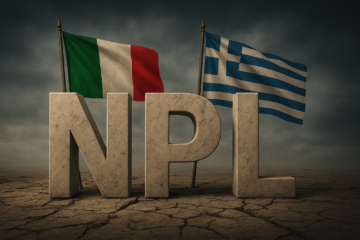Airbus SE (EPA:AIR) – market cap as of 26/10/2017: USD 64.64bn
Bombardier Inc. (TSX:BBD.B) – market cap as of 26/10/2017: CAD 6.16bn
Introduction
On October 16, 2017, Airbus and Bombardier signed an agreement to become partners on the C Series aircraft program. Under the agreement, Airbus will provide procurement, sales and marketing, and customer support expertise to the C Series Aircraft Limited Partnership (CSALP), the entity manufacturing and selling the C Series. Airbus will acquire a 50.01% stake in CSALP, whilst Bombardier and Investissement Québec will own c. 31% and 19% respectively. At closing, there will be no cash contribution by any of the partners, nor will CSALP assume any financial debt.
This strategic partnership is expected to ensure the sustainability and growth of the C Series program, as well as consolidating the entire Quebec aerospace cluster. Completion of the transaction is currently expected for the second half of 2018.
About Airbus
Airbus SE, formerly Airbus Group SE, is a Dutch company that is global leader in aeronautics, space and related services. The Company operates through three segments: Airbus Commercial Aircraft (focused on the development, manufacturing, marketing and sale of commercial jet aircraft and aircraft components), Airbus Helicopters (specialized in the development, manufacturing, marketing and sale of civil and military helicopters) and Airbus Defense and Space (producing military combat aircraft and training aircraft, providing defense electronics and global security market solutions, and manufacturing and marketing missiles).
In 2016 the company employed a workforce of around 134,000. Airbus offers the most comprehensive range of passenger airliners from 100 to more than 600 seats and business aviation products. Airbus is also a European leader providing tanker, combat, transport and mission aircraft, as well as one of the world’s leading space companies. In helicopters, Airbus provides the most efficient civil and military rotorcraft solutions worldwide.
Sales in FY2016 were $67bn, compared to $64bn in FY2015. Despite rising revenues, year on year net income fell -63.09% from $2.70bn in FY2015 to $995m in FY2016, mostly due to an increase in the cost of goods sold as a percentage of sales from 86.27% to 92.09%.
About Bombardier
Incorporated in 2013 and based in Montréal, Canada, Bombardier is the world’s leading manufacturer of both planes and trains. Its shares are traded on the Toronto Stock Exchange (BBD). It operates through four segments: Business Aircraft, Commercial Aircraft, Aerostructures and Engineering Services, and Transportation.
The first segment is engaged in the design, manufacture and aftermarket support for Learjet, Challenger and Global jets. The Commercial Aircraft segment manufactures commercial aircrafts in the 60- to 150-seat categories, including the C Series mainline jets. The Aerostructures and Engineering Services segment designs and manufactures aircraft structural components, whilst the Transportation segment offers a portfolio of products and services in the rail industry.
In the fiscal year ended December 31, 2016, Bombardier posted revenues of $16.3bn (-10.09% from $18.17bn of FY2015). However, the previous year net loss of $5.35bn decreased to a smaller loss of $1.02bn. Earlier this year, the Canadian government said it would provide $372.5 million in interest-free loans to Bombardier, part of which would go to the CSeries passenger jet, which was mired in delays and cost overruns prior to entering commercial service in 2016.
Industry Overview
Overall, the aviation industry has been for years in the vestibule between high revenues and tidy profits. In fact, just about every player in the value chain — airports, airplane manufacturers, jet engine makers, travel agents, and service companies, to name a few — turns low returns (around 5-6%), and, as a consequence, as price competition intensified, many industry operators exit the industry.
In outline, the global commercial aircraft manufacturing sector is estimated to possess a medium level of market share concentration. In 2017, the industry’s four largest players are expected to account for an estimated 49.0% of industry revenues which, just for having an order of magnitude, are about $400bn. However, the commercial jet aircraft market and the airline industry remain extremely competitive. Although the high barriers to entry like high capital costs, technological know-how, and nationwide industrial capacity make it extremely difficult for nations to start their own commercial aircraft manufacturing industry, there are aggressive international competitors who are intent on increasing their market share, such as some entrants from Russia, China and Japan. The market is a virtual duopoly controlled by Boeing and Airbus and, next to them, some regional aircraft manufacturers – such as Bombardier, Comac, and Embraer – are still fighting to find their role in the market.
Historically, order intake for commercial aircraft has shown cyclical trends, due in part to changes in passenger demand for air travel, which is in turn driven by a range of economic variables, such as gross domestic product (GDP) growth, private consumption levels or working-age population size. Other factors, however, play an important role in determining the market for commercial aircraft, such as:
- the average age and technical obsolescence of the fleet relative to new aircraft
- the number and characteristics of aircraft taken out of service and parked pending potential return into service
- passenger and freight load factors
- airline pricing policies and resultant yields
- airline financial health and the availability of outside financing for aircraft purchases
- evolution of fuel prices
- regulatory environment (authorities regulate indeed every aspect of airplane manufacturing)
- environmental constraints imposed upon aircraft operations
- market evolutionary factors such as the growth of low-cost passenger airline business models or the impact of e-commerce on air cargo volumes.
Deal Structure
The partnership between Airbus and Bombardier on C Series aircraft program was signed on October the 16th. Currently, the C Series program is operated by CSALP in which Bombardier and Investissement Québec hold respectively a 62% and a 38% interest. According to the terms of the transaction, Airbus will acquire a 50.01% interest in C Series Aircraft Limited Partnership. On the other hand, Bombardier will hold 31%, whereas the Quebec government’s investment agency will retain 19%.
Initially, there will be no cash contribution by any of the partners and Bombardier will fund any cash shortfalls up to a total of $700m for the first three years. Airbus will benefit from a call option on Bombardier’s interest at market value. The call can be exercised after at least 7.5 years. On the other side, Bombardier will hold a put and can require Airbus to buy its interest after the same time period.
The transaction has been approved by the corresponding companies but will need to pass regulatory approvals. If the deal is to gain approval, it is expected to close in the second half of 2018.
Deal Rationale
Both companies believe the partnership will ensure sustainability and growth of their businesses.
“This is a win-win for everybody! The C Series, with its state-of-the-art design and great economics, is a great fit with our existing single-aisle aircraft family and rapidly extends our product offering into a fast-growing market sector. I have no doubt that our partnership with Bombardier will boost sales and the value of this programme tremendously”- Airbus CEO Tom Enders stated showing his optimism regarding the potential synergies emerging from the deal. The transaction is said to decrease costs by combining supply and production chains.
Moreover, both companies are to benefit from the increasing demand for single-aisle aircrafts. At the moment, Airbus is focused on the higher end of the single-aisle business (150-240 seats), while the C Series is oriented towards the single-aisle market with seats ranging from 100 to 150. Their strategies are complementary. Therefore, the extension of the product line is expected to boost sales and double the value of the program.
As far as social responsibility is concerned, the partnership will help preserve and create additional jobs in the sector, stimulating Québec and Ireland economies – Bombardier runs a 4500-employee plant in Belfast. The headquarter and the primary assembly line of CSALP will continue to operate in Canada with the support of Airbus.
While there seem to be many rational motives behind the partnership, skeptics argue that the transaction serves to dodge trade tariffs. Earlier in 2017 the US government threatened Bombardier with punitive tariffs up to 300% of its jets’ value, accusing the company of selling it jets below cost. The new deal provides for a partial escape from the US tariffs since the Airbus’ Alabama plant will be used for a considerable part of the production of the C Series. However, it is worth highlighting that Boing thinks the Alabama site cannot be a real production facility, because that would drain hundreds of jobs out of Canada. Bombardier has accepted the agreement without any cash payment from the counterparty, which might suggest the company is willing to accept the partnership mostly to get around the trade restrictions.
Market Reaction
On the day of the announcement Bombardier’ share price rose by 15.68% to CAD 2.73 (against the pre-announcement price on the same day). In the following days the stock price was very stable, closing the trading session on October the 27th at CAD 2.78 (c. 19% above the pre-announcement price). Airbus’ shares also rose but by as little as 4.83% on the day of the announcement. However, they saw the higher post-announcement raise stepping to $86.56 (12.31% increase) as of October, 27. The rationale behind this upwards movements are to be found in the boosted prospects in Asia, as well as the save of many jobs in Québec and Northern Ireland.



0 Comments